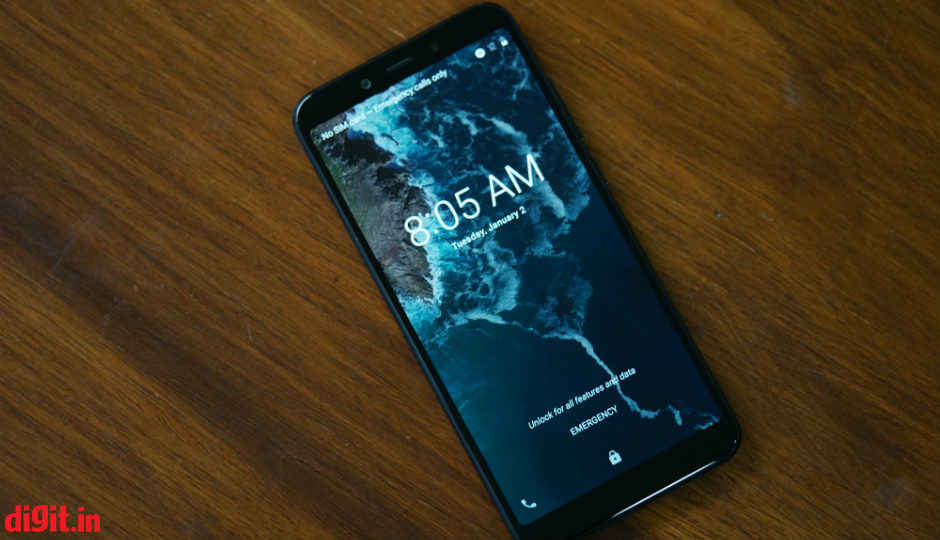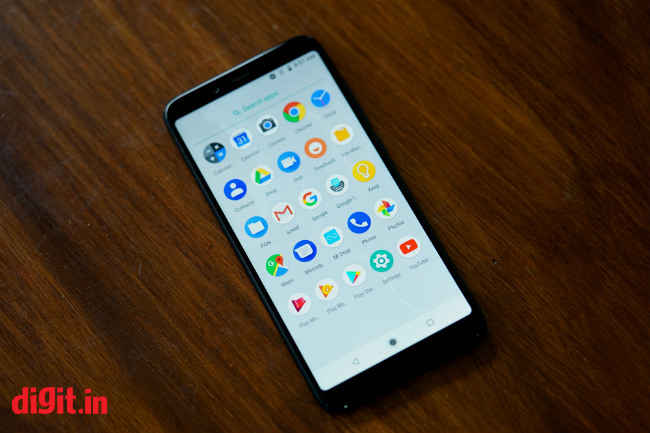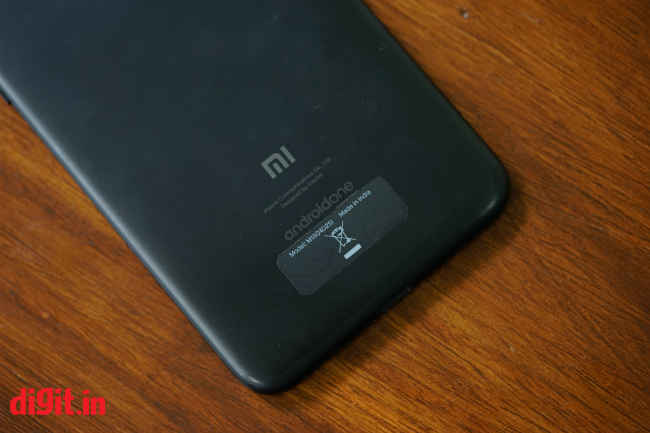Xiaomi Mi A2 First Impressions: A mixed bag of features
Apart from being the second attempt at an Android One phone, Xiaomi's Mi A2, when it launches in August, will be the most powerful Mi device in India.

The Mi A1 last year not only took everyone by surprise, it also jump started the Android One program as an initiative to showcase Android in its purest form. With the Mi A1, Xiaomi was testing the waters by venturing out of its MIUI ecosystem for the first time. This week, the company launched the Mi A2 in Spain indicating that the project is no longer an experiment but a full-fledged series that is likely to continue in the future. The Mi A2 also happens to be the company’s first product launch after its IPO went live and also a part of a deeper focus in the European market which Xiaomi is ambitious about. The Mi A2, hence, carries a lot of weight. For consumers, that’s always a good thing. The Mi A2, when it launches in India on August 8th, will become the most powerful Mi device in India this year. The Mi Mix 2S never arrived and neither did the Mi 8 nor the Mi 8 SE. The fact that the most powerful Mi phone also runs on stock Android is another added bonus. I had a chance to use the phone for a short while, and this is my first impressions.
 Survey
SurveyWhat’s good?
How important the Mi A2 is for Xiaomi shows in the look and feel of the phone. Xiaomi has rebranded the Mi 6X as the Mi A2 which has a sleek form factor. It’s thinner than the previous Mi A1 and even the Redmi Note 5 Pro. As a result, the primary camera noticeably juts out of the body. Xiaomi claims the bump is a conscious decision. It gives the AF motor of the camera more space to move and focus quicker and to fit a bigger sensor in the unit. The front is all screen, mostly. The Mi A2 touts an 18:9 display of FullHD+ resolution. The IPS LCD panel stretches at 5.99-inch diagonally which is a big improvement from the 5.5-inch panel on its predecessor. There are bezels on the top and the bottom, but frankly, I like this form factor better than the one with display notches. It gives more space to hold the phone while gaming and doesn’t break the continuity of the screen. The corners are also rounded to offer better ergonomics.
Interestingly, the Mi A2 stands out at a time when the glass-sandwich design in phones is quickly becoming the status quo. Being a metal unibody phone, It may not have the bold colours that glass design phones bring to the table, but it should more than makes up for it terms of durability. It’s quite solidly built with a brushed aluminum finish that doesn’t attract a lot of smudges. It is still quite slippery though. The rear-mounted fingerprint sensor is well-placed with the finger being able to reach it quite easily.
The Mi A2 is powered by the Qualcomm Snapdragon 660 SoC. Qualcomm has been strengthening its portfolio of mid-range chipsets and the 660 is its most powerful offering, right below the high-end Snapdragon 710. The latter is yet to show up in devices in India. With an octa-core arrangement of custom Kryo 260 cores going to a max clock speed of 2.2GHz, the Snapdragon 660 packs a lot of firepower. On top of that, the fact that the Mi A2 runs on stock Android means the software doesn’t need a lot resources, leaving the user free to run CPU-intensive apps on the phone. How well it manages to perform under a stressful environment will be left for the review, but after having used the phone for a short while, it’s easy to see just how fast and snappy everything is. And that’s a good thing, considering the volume of complaints the Mi A1 received about slowing down after a few months of usage. We will have to see whether the Mi A2 ends up suffering from the same shortcoming or not. Futhermore, being Android One certified means the Mi A2 will receive regular security updates as well as a promised update to Android P when it becomes available.
Xiaomi will be launching only the 4GB+64GB variant in India for now. In Europe, the Mi A2 is also offered in 6GB+128GB and 4GB+32GB variants, neither of which are coming to India as of now. The RAM and storage, as a result, will remain the same as its predecessor. Another thing that will remain the same is the software experience. The Mi A2, like the Mi A1 is Android One certified and runs on pure, stock Android UI. Only the camera app is Xiaomi’s. Everything else like the browser, gallery, dialer are all Google’s stock apps. It comes very close to how the Google Pixel feels while using.
While Xiaomi left the software for Google to handle, it focused more on the camera of the Mi A2. It’s predecessor’s camera was hailed as one of the better performing ones in the mid-range segment last year with an iPhone 8-like implementation of the dual camera. It had a telephoto and wide angle lens combination that allows 2X optical zoom and portrait mode. In the Mi A2, Xiaomi actually experimented with the dual cameras at the back. You get a 12MP primary sensor and a 20MP secondary sensor on the back. Both sensors have an aperture of f/1.75 which is the highest the company has ever given on a phone. The secondary sensor’s purpose of existence is to enhance low-light images. It comes into effect only when the light is poor, and use pixel-binning to output a better low-light image. Simply put, pixel-binning combines four adjacent pixels together to form a superpixel that can hold more detail without much noise creeping in. Win-win for low-light photographers. The same happens up front as well with a 20-megapixel sensor placed on top of the display. The technique has been used by more-expensive phones like the Huawei P20 Pro but whether the implementation works in the case of Xiaomi Mi A2 is something we will find out after we’re done testing the phone.
For the portrait mode, Xiaomi is relying on the Snapdragon 660’s AI Engine to train its cameras to better recognise the detail on people’s faces, as well as take into account lighting conditions the photo is being shot in. The company claims that this results in well-lit photos and more detail in the portraits.
What’s not good?
So far, I’ve talked about all that’s good in the Mi A2. It’s certainly promising but it’s far from perfect. In its bid to slim down the form factor, Xiaomi took two steps that might not bode well with its fan-base. First, it removed the 3.5mm headphone jack and second, it packed a less capacious battery in the phone. The former is surely a first for a mid-range phone. A lot of literature has been written over how ditching the reliable 3.5mm headphone jack isn’t a feasible solution, but to do it on a flagship phone still makes some sense. Removing it from a mid-ranger is quite shocking, to say the least. Mid-range phone buyers look for an all-rounder package that gives a high value-for-money. By taking away the headphone jack, Xiaomi is asking buyers to either invest in a wireless headphone or embrace the dongle-life with every chance of the dongle going missing at any time. The Mi A2 does come with a dongle to compensate for the lack of the jack. The 3,000mAh battery on the Mi A2 may also come under scrutiny. On paper, it’s definitely lesser than its predecessor. But the fear of poor battery life might be allayed by the fact that it’s powered by a 14nm chipset and running on lightweight stock Android. Also missing is the option to enable Dual VoLTE support. While the chipset does support it, it’s not there in the phone which is a bummer for dual SIM users. Even more alarming is the fact that it doesn’t have expandable storage. Xiaomi is offering 64GB of onboard memory which, in 2018 isn’t all that much. Games are going over the 1GB mark frequently and most-used apps like Facebook, Instagram and WhatsApp require a lot of storage to store cached images and videos.
First Impressions
In conclusion, the Xiaomi Mi A2 holds promise. A fast processor, stock Android and a feature-packed camera do make the Mi A2 sound like a lucrative option. However, there’s no water proofing, no headphone jack, no dual VoLTE support and no expandable storage either. How much these compromises take away from the Mi A2 will be something we determine in our review, but for now, it is definitely a device we can’t wait to put through our review process.


